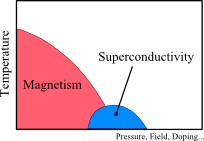The exploration of superconductivity stands as one of the most tantalizing endeavors within the field of condensed matter physics. It beckons researchers like a siren’s call, enchanting them with the promise of revolutionary applications and profound insights into the fundamental laws of nature. At its core, superconductivity represents a phase transition of matter, a glorious marriage between quantum phenomena and macroscopic magnetism, that occurs when certain materials are cooled to temperatures near absolute zero. This compelling intersection of science warrants a comprehensive examination of its research potential, leading to numerous compelling reasons for scholars to delve into this captivating area.
First and foremost, the allure of superconductivity lies in its transformative capabilities. The phenomenon allows electrical current to flow through materials with zero resistance, akin to a river that glides effortlessly over smooth stones, free from friction and turbulence. This property alone engenders a plethora of possible applications, from incredibly efficient power transmission systems to the development of powerful electromagnets crucial for magnetic resonance imaging (MRI) in medicine. The potential of integrating superconductors into our energy infrastructure could lead to an unprecedented reduction in energy loss, hence addressing one of the most pressing challenges of our time: sustainable energy consumption.
Another dimension of intrigue is the profound mysteries that superconductivity holds. Despite extensive research, the underlying mechanisms of high-temperature superconductors—materials that exhibit this remarkable property above the conventional superconducting temperature—remain largely unexplained. This enigma is encapsulated in the words of a physicist who once remarked that “the universe is a puzzle; superconductivity is one of its most enigmatic pieces.” Unraveling this mystery could not only advance the field tech-wise but may also provide enlightening revelations about the interactions that govern quantum mechanics, paving the way for new theories of physics that could redefine our understanding of the physical world.
Theoretical and experimental physicists alike find themselves drawn to the challenge of elucidating the properties of superconducting materials. The rich tapestry of phenomena associated with superconductivity—such as the Meissner effect, flux pinning, and quantum coherence—transcends the mere study of electrical properties and invites interdisciplinary approaches melding materials science, quantum mechanics, and even computational modeling. This convergence cultivates an intellectually stimulating environment where collaboration thrives, empowering researchers to innovate and expand their academic horizons.
Moreover, the elegance of superconductivity manifests in its underlying mathematical framework. The Bardeen-Cooper-Schrieffer (BCS) theory elegantly describes conventional superconductivity and has been pivotal in the interpretation of quantum phase transitions, providing a rigorous structure that appeals to mathematicians and physicists. The ongoing pursuit to extend this theoretical framework into the realm of high-temperature superconductors showcases the dynamic and interactive nature of theoretical and experimental research—a relationship as intricate as the very phenomena being studied. Thus, the continual interplay between theory and practice in superconductivity serves as fertile ground for scholars yearning to engage in significant scientific discourse.
Superconductivity also resonates profoundly with the quest for novel materials. The race to discover or synthesize new superconductors, particularly those that function at higher temperatures or under more feasible conditions, has led to the emergence of innovative experimental techniques, such as chemical doping and nanostructuring. This pursuit parallels the historical efforts of alchemists, who sought to transform base metals into gold; the researchers of today aim to unlock the superlative properties of everyday materials. Rare-earth cuprates, iron-based superconductors, and even organic compounds exhibit properties that could revolutionize various industries, from computing to transportation. Each breakthrough in material discovery invites further curiosity and invigorates ongoing research.
Finally, the implications of superconductivity extend beyond the realm of pure science. The marriage of superconductivity and technology encapsulates broader socio-economic considerations. As nations grapple with energy crises, climate change, and the demand for advanced technologies, the significant advancements emerging from superconductivity research promise not only to enhance our quality of life but also to provide potential solutions to global challenges. By investing in this field, governments and institutions position themselves at the forefront of technological innovation, poised to reap the socioeconomic benefits that accompany breakthroughs in superconductivity.
In conclusion, the inquiry into superconductivity is not merely an academic pursuit; it is an odyssey through the very fabric of reality. The duality of investigating an enigmatic phenomenon while simultaneously fostering potential applications underscores the unique appeal of this research avenue. With every experiment conducted, every theoretical model proposed, and every material synthesized, researchers unravel the complex threads that weave together energy efficiency, quantum mechanics, and transformative societal impact. Enveloping both the realms of science and technology, superconductivity thus stands as a beacon of opportunity, inviting inquisitive minds to forge ahead into a landscape rich with possibility, ready to illuminate the darkened corners of our universe. This captivating arena holds the promise not just of scientific advancement but the potential to actuate the visions of an efficient, sustainability-driven future.












